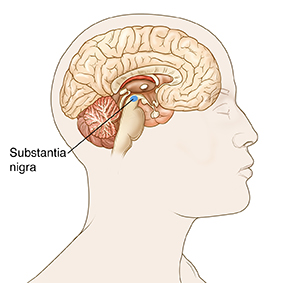Understanding Parkinson Disease
Parkinson disease is a condition that affects control over your movements. It’s caused by a lack of dopamine, a chemical that helps the nerve cells in your brain communicate with each other. When dopamine is missing from certain areas of the brain, the messages that tell your body how to move are lost or distorted. This can lead to symptoms such as shaking, stiffness, and slow movement. There’s no cure for Parkinson disease. But proper treatment can help ease symptoms and allow you to live a full, active life.
Changes in the brain
Dopamine is produced in a small area of the brain called the substantia nigra. For reasons that aren’t yet clear, the nerve cells in this region that make dopamine begin to die. This means less dopamine is available to help control your movements. When healthy, the substantia nigra makes enough dopamine to help control your body’s movements.

Symptoms of Parkinson disease
Parkinson symptoms often appear gradually. Some may take years to develop. Others you may not have at all. Below are the most common:
-
Shaking (resting tremor). This can affect the hands, arms, and legs. Most often, the shaking is worse on one side of the body. It usually lessens when the arm or leg (limb) is used.
-
Slow movement (bradykinesia). This can affect the whole body. People may walk with short, shuffling steps. They can also feel “frozen” and unable to move.
-
Stiffness (rigidity). This occurs when muscles don’t relax. It can cause muscle aches and stooped posture.
-
Other symptoms. This includes balance problems, small handwriting, soft voice volume, constipation, reduced or “flat” facial expression, and sleep problems. Memory loss or other problems with thinking may also occur later in the progression of the disease.
How is Parkinson diagnosed?
There is no single test for Parkinson disease. The diagnosis is based on your symptoms, health history, and a physical exam. You may also have tests to help rule out other problems. These may include blood tests to look for diseases that cause similar symptoms. They can also include brain-imaging tests, such as an MRI or CT scan of the brain.
Parkinsonism is the name for a group of brain conditions that all have symptoms similar to Parkinson disease. However, the causes of these symptoms are different. In some cases, Parkinson-type symptoms may result from strokes or head injury. They can also be caused by medicines or other diseases that affect the brain. In general, these conditions can’t be treated as well using the medicines that help people with Parkinson disease.